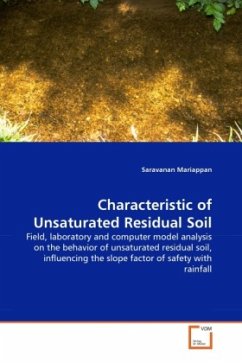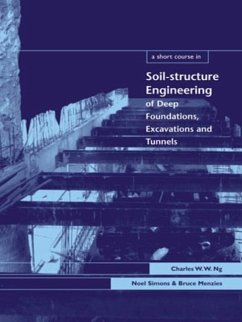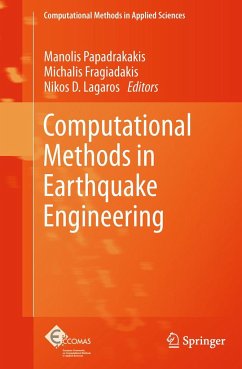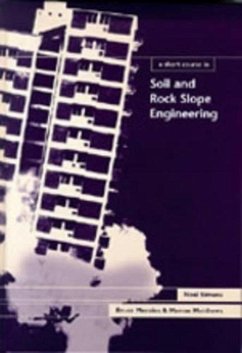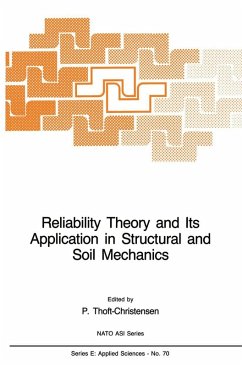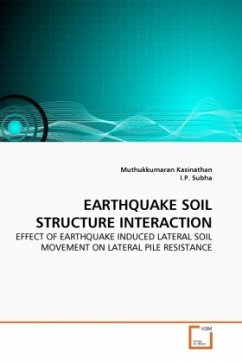
EARTHQUAKE SOIL STRUCTURE INTERACTION
EFFECT OF EARTHQUAKE INDUCED LATERAL SOIL MOVEMENT ON LATERAL PILE RESISTANCE
Versandkostenfrei!
Versandfertig in 6-10 Tagen
32,99 €
inkl. MwSt.

PAYBACK Punkte
16 °P sammeln!
The performance of piles in liquefying ground under earthquake loading is a complex problem due to the effects of a progressive build-up of pore water pressures in the saturated soils. The loss of soil strength and stiffness due to liquefaction may develop large bending moments and shear forces in piles, possibly leading to pile damage. The significance of liquefaction-related damage to pile foundations has been clearly demonstrated by the major earthquakes that have occurred during past years. The present investigation is to find out the effect of earthquake induced lateral soil movement on l...
The performance of piles in liquefying ground under earthquake loading is a complex problem due to the effects of a progressive build-up of pore water pressures in the saturated soils. The loss of soil strength and stiffness due to liquefaction may develop large bending moments and shear forces in piles, possibly leading to pile damage. The significance of liquefaction-related damage to pile foundations has been clearly demonstrated by the major earthquakes that have occurred during past years. The present investigation is to find out the effect of earthquake induced lateral soil movement on lateral pile capacity. Modelling and the analyses are done using PLAXIS 2D. A plane strain alaysis is carried out. Soil layers are modelled as 15 noded triangular elements and pile is modelled as 5 noded beam elements. The model used for the analysis is validated by comparing the results given by Abdoun, and Dobry (2002). In this, 1995 Kobe earthquake data (Japan) is used. Parametric study has been done on the same model by varying slope in the soil layers and L/D ratio of the pile.




